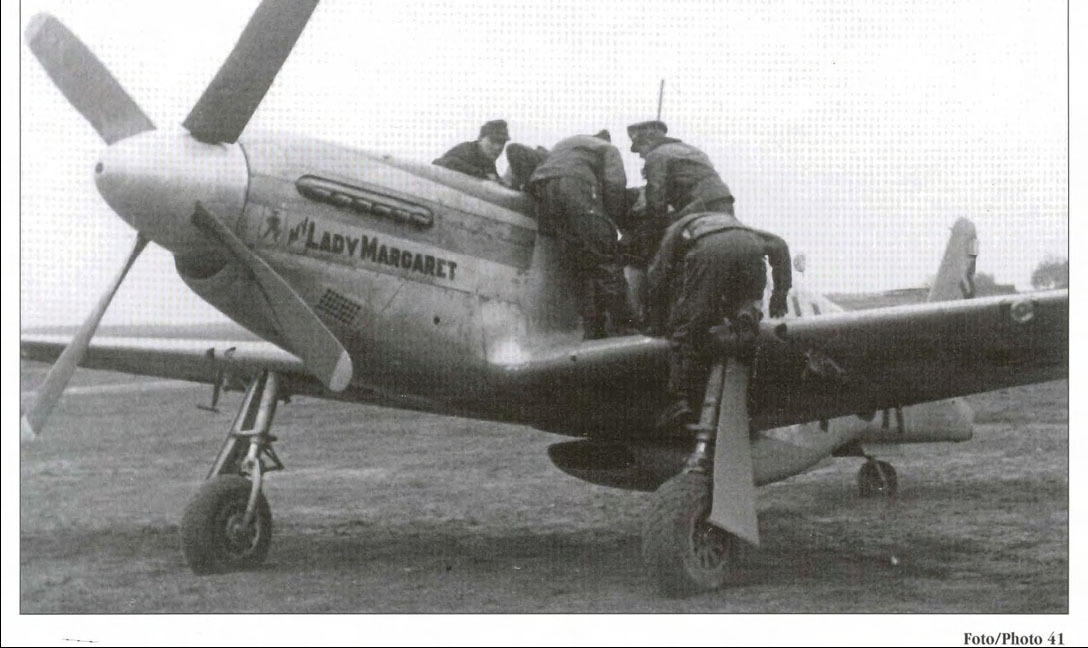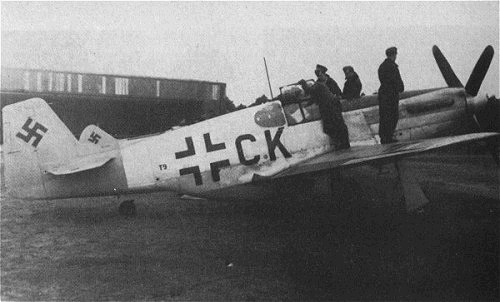T9+HK and T9+CK were different aircraft.
T9+HK was a P-51B-15-NA (s/n 43-24825) belonging to 334th FS, 4th FG, 8th AF, coded QP-G with noseart "Jerry". It was captured after making a forced landing near Cambrai on 06 Jun 1944 on a fighter sweep. It was recovered and restored to flying status at Rechlin for testing before being passed on the Zirkus Rosarius for training. It was lost in a flying accident 10 Dec 1944 killing the pilot.
By this time the OD/NG camouflage had been discontinued and aircraft were being delivered in natural metal. Initially it had its US markings and noseart removed adding a yellow tip to its red spinner and nose band and the RLM04 underside. It is likely that it was repainted in the standard Luftwaffe captured aircraft scheme of RLM74 over RLM04 when it was transferred Zirkus Rosarius. It is likely the P-51 without the fin fillet in some of your pictures as it was captured before that modification was introduced in Aug 1944.
T9+CK was a P-51C-5-NT (s/n 42-103458) belonging to 318th FS, 325th FG, 15th AF, coded A45 with noseart "My Lady Margaret/Miss Marilyn". It was captured 09 Dec 1944 while on an F-5E escort mission with 3 other P-51's. All 5 aircraft were lost due to bad weather. The pilot of the P-51C made a wheels down landing in an attempt to recover the pilot of a P-51D that had made a wheels up landing but became stuck in the field. The P-51C was recovered intact while the P-51D was heavily damaged and recovered for spares.
It too would have been delivered in natural metal and initially received only the RLM04 underside painting after removal of its US markings. There is a photo showing the noseart retained for awhile after capture.
This aircraft also appears to have received the fin fillet modification.
It was also likely repainted in the RLM74/RLM04 scheme when transferred to Zirkus Rosarius.
Cheers,
Rich


































